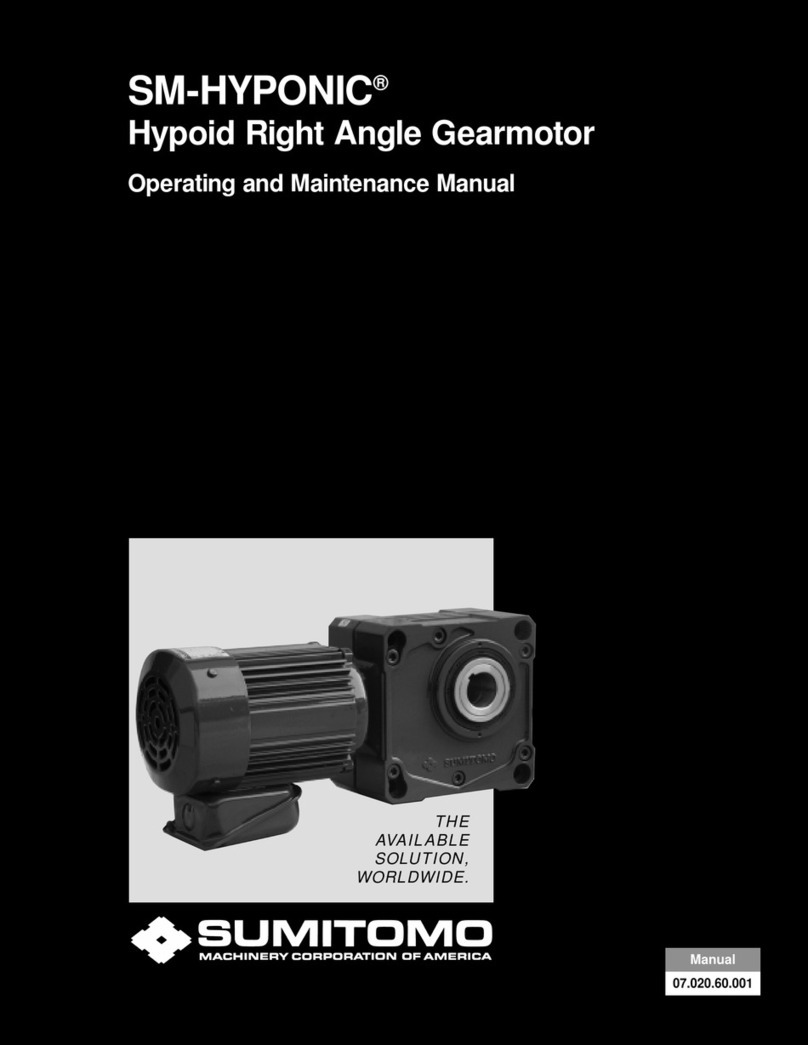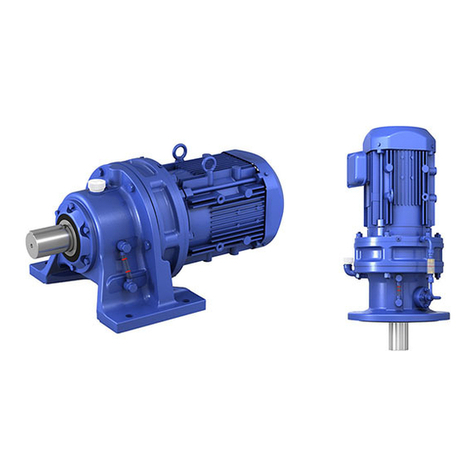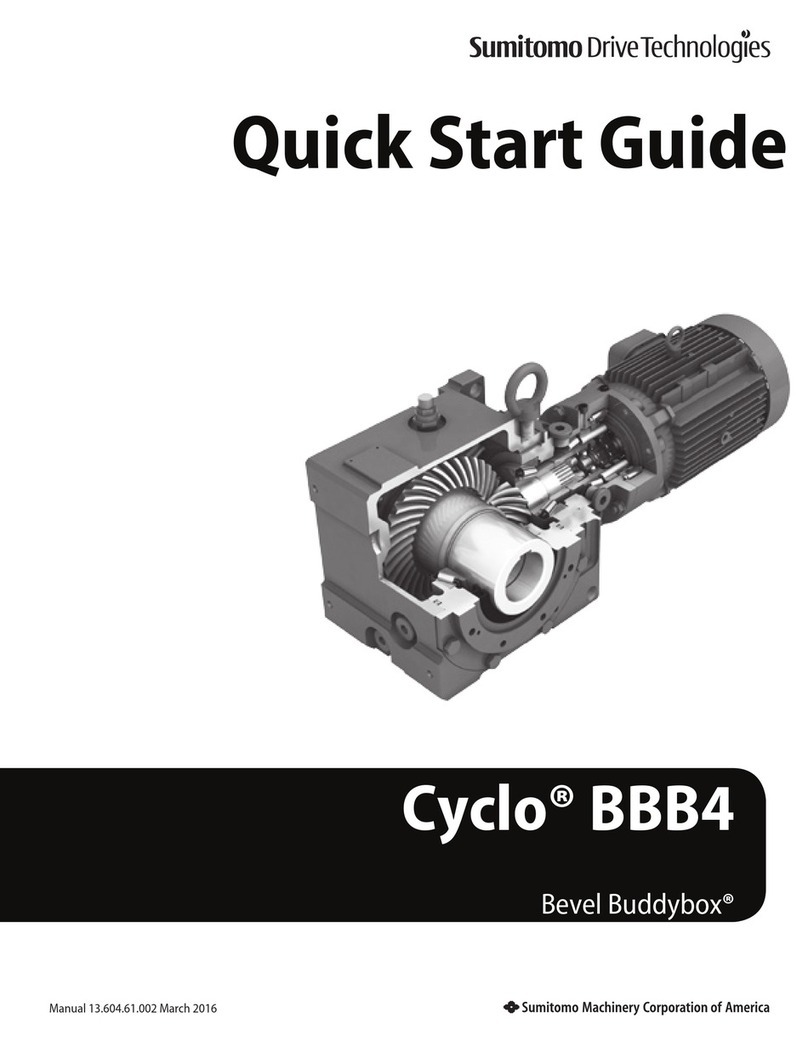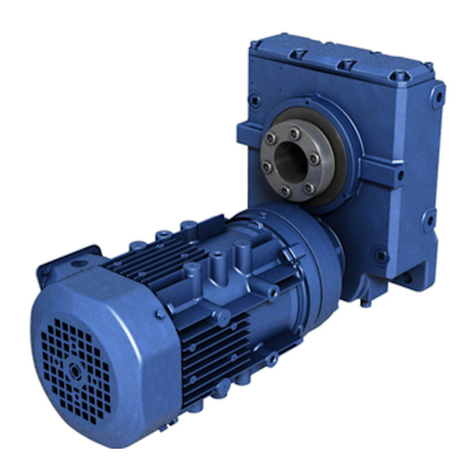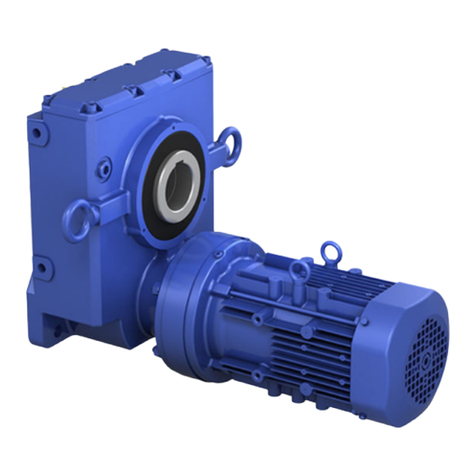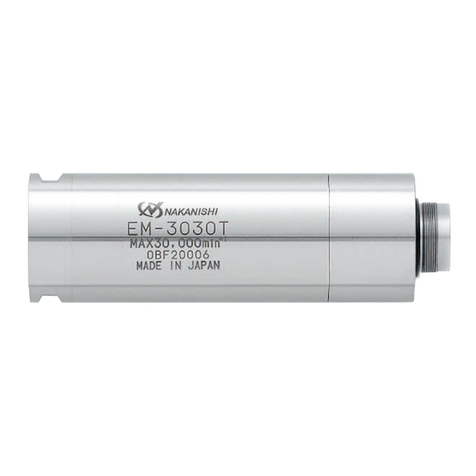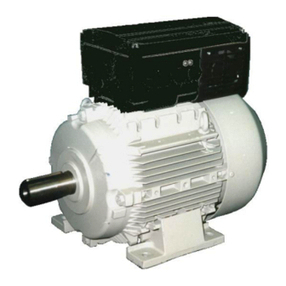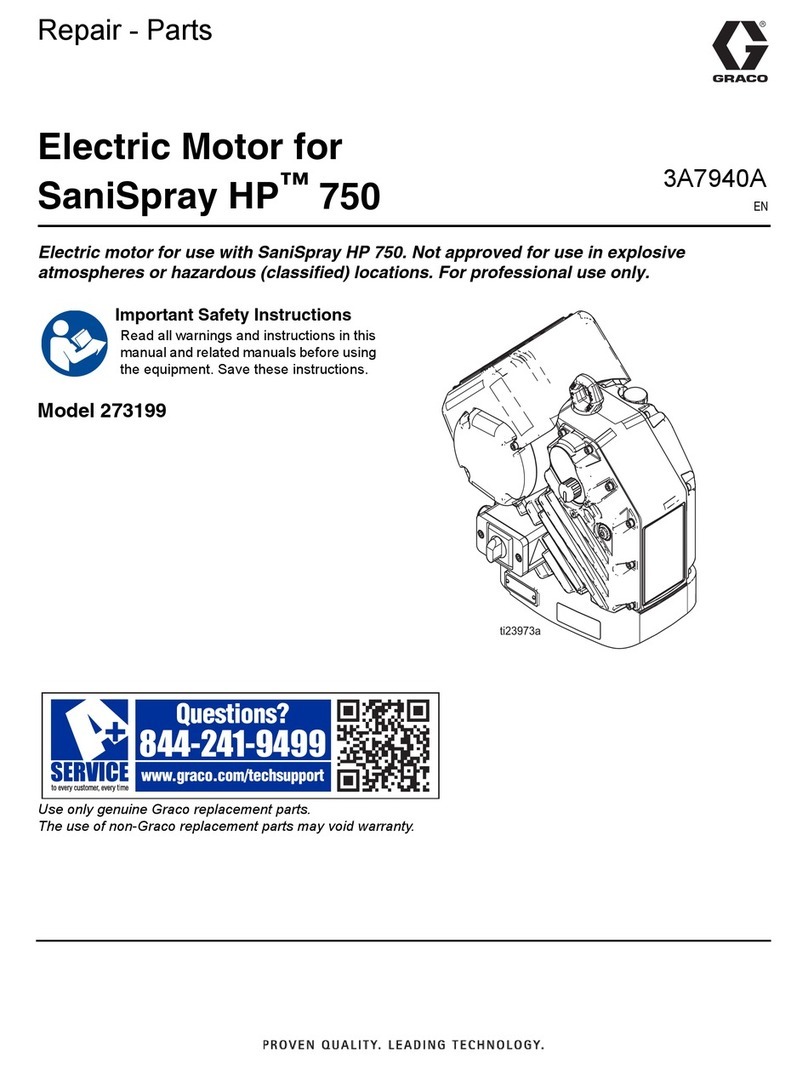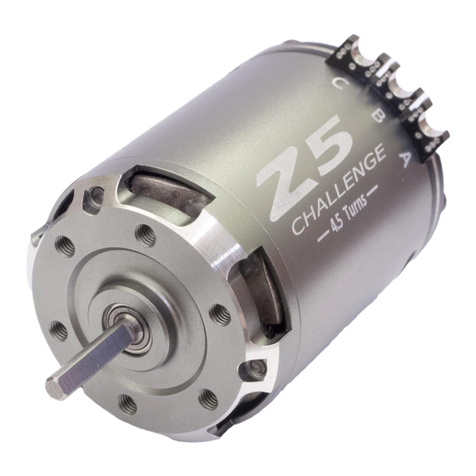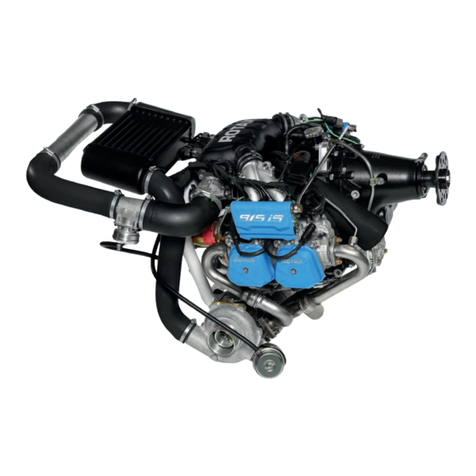
5
When storing reducers for any extended period of time, consider
the following important points.
2-1 Storage Location
Store the unit indoors in a clean dry location.
Do NOT store the unit outdoors or in locations where there is
excessive moisture, dust, severe temperature change, corrosive
gas, etc.
2-2 Storage Period
• Storage period should be less than 1 year.
• Standard Rust Prevention Specications
External rust proong
Rustproofing oil is applied to the unit before shipment.
After the unit is delivered, check the machined faces for
rusting once every six months and reapply rustproong or
take other appropriate rust prevention steps as required.
Internal rustproong
The product should be used in an environment free of
severe moisture or dust, extreme temperature changes
and corrosive gases. Storage should be provided under
generally acceptable indoor manufacturing condition or
in a warehouse.
• When the unit will be shipped overseas or stored for a period of
longer than 1 year, please contact us for special rust prevention
specications.
• When the unit will be stored for a period of longer than 1 year, the
unit should be operated for a few minutes under no-load condi-
tions every two or three months.
2-3 Use After Storage
• The oil seal is prone to deterioration due to the surrounding condi-
tions such as temperature, ultraviolet rays, etc., so after long-term
storage, the unit should be inspected before operation, and any
deteriorated parts should be replaced with new parts.
• When the storage period is 2 years or longer, the oil seals and
grease should be replaced before starting operation.
• At the start of operation, make sure there is no abnormal noise,
vibration, heat, etc. If any abnormal condition is observed, immedi-
ately contact our authorized service provider nearest to you.
[2] Storage
